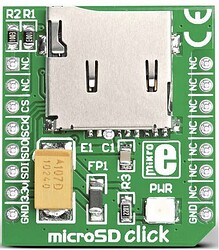The topic I want to talk about are some hardware specs. I use a Banana PI BPI-R3.
Usually a Banana Pi router case has a basic design. If you want more, you have to make it!
Yes, Sinovoip also designs and produces cases and some additional parts. The last case of BPI R3 mini was very impressive.
But, even for their own routers, the cases do not give you full access of all ports. For example the 26 Pin GPIO header, hole for a fan, additional holes for LTE antennas and access to M2 for SSD. The cases are for basic users.
In this context, I ask myself, how can the case for the BPI-R4 match together with a mikroBUS Port?
And the answer is: ony if you do not use it?
This could be a good strategy. Because for a "MAKER" this is not a problem!
The future will show how this will solved ...
The most mysterious question for me is: how many mikroBUS Ports the board will have?
In the Banana pi forum there is this:
"... MikroBUS socket for expansion modules"
But in this forum it is written:
"Expansion slots: mikroBUS"
-> more than one  ?
?
With mikroBUS we may can get some expansions like Ethernet or SD Card:
I think mikroBUS is really interesting, because I found no Pi with it. Yes, there are adapter boards. But the decision for mikroBUS and against 26 or 40 Pin GPIO is very special!
Is it a PI or a Router? I'm interested to see what people will do with it!
Another topic is the MMCX Antenna connector. Thank you! On the BananaPi there is usually a IPEX1. For more than on time usage MMCX look more compftable.
And last is the easy connection (console) over USB-C. Good choice!
I hope the developers from Sinovoip will think about these usability increasing improvments and that the next Banana PI will benefit from this usefull specs.
If there were no BPI-R3 und R4 boards, I would consider to buy the OpenWrt One.
But the SFP and 4/5G modem connectivitys for fibe internet and cellular internet are attractive. I'm really concernd about the number of RJ-45 ports (OpenWrt One).
I'm not a programmer. For me the router specs make sense for software development and a big community. But there was a post from a guy who was afraid of commercialization. I understand his concerns ... . The most people are so focused on perfomance and possibilities (me too). This board is focused on reliability  .
.
I found THE QUESTION about the purpose of the development of OpenWrt interesting. As much routers as possible or some main basic platfrom boards (as free as possible).
I'm finished with my hardware comment on this software platform  .
.
Thank you!
